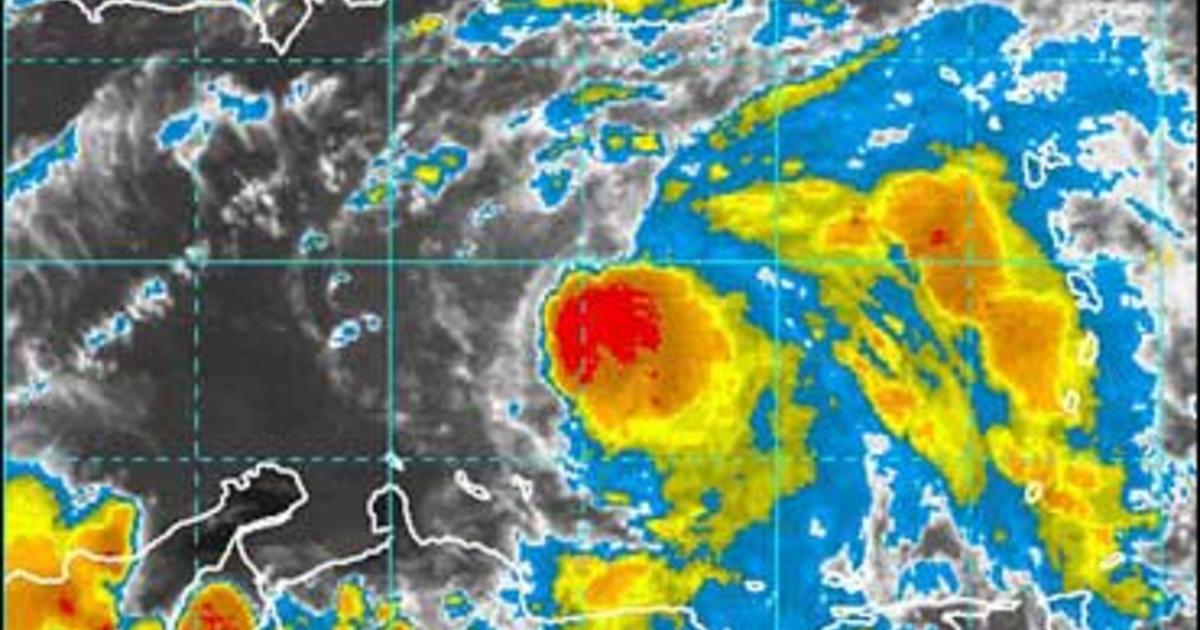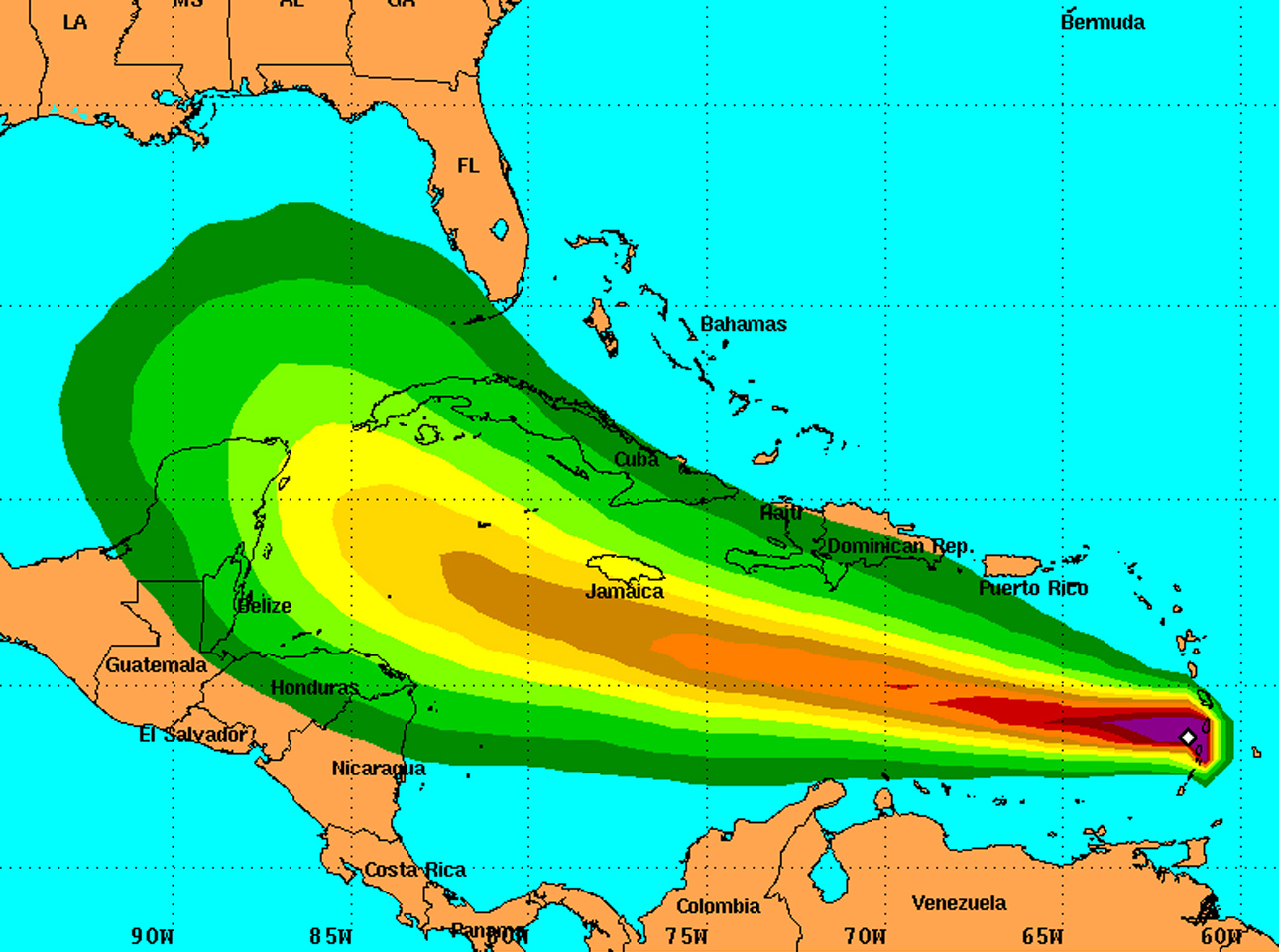Tropical Storm Ernesto’s Formation and Development

Tropical Storm Ernesto, which later intensified into a hurricane, originated in the central Atlantic Ocean. Its formation and development were influenced by a complex interplay of meteorological factors.
Origins and Path of Development, Tropical storm ernesto hurricane
Tropical Storm Ernesto formed on August 2, 2006, from a tropical wave that moved off the coast of Africa. This wave, characterized by a cluster of thunderstorms, interacted with favorable atmospheric conditions, leading to its intensification into a tropical depression. The depression continued to strengthen as it moved westward across the Atlantic, becoming Tropical Storm Ernesto on August 4.
Factors Contributing to Intensification
Several factors contributed to Ernesto’s intensification into a hurricane.
- Warm Sea Surface Temperatures: Ernesto formed over the warm waters of the Atlantic Ocean, where sea surface temperatures were above 26.5 degrees Celsius (80 degrees Fahrenheit). This warm water provided the necessary energy for the storm to intensify.
- Low Wind Shear: Low wind shear, a condition where winds change little with altitude, allowed the storm’s thunderstorms to remain organized and grow vertically, enhancing its intensity.
- Favorable Atmospheric Conditions: Ernesto encountered a favorable environment characterized by low air pressure and moist air, which further fueled its development.
Meteorological Conditions
The formation of Tropical Storm Ernesto was influenced by several key meteorological conditions.
- Low Air Pressure: The presence of low air pressure in the atmosphere created a zone of convergence, drawing in moisture and air, contributing to the storm’s development.
- Prevailing Wind Patterns: The prevailing easterly trade winds steered the tropical wave westward across the Atlantic, providing a path for its development.
- Sea Surface Temperatures: The warm waters of the Atlantic Ocean provided the necessary heat and moisture for the storm to form and intensify.
Impacts and Effects of Hurricane Ernesto: Tropical Storm Ernesto Hurricane

Hurricane Ernesto, while classified as a tropical storm, left a trail of destruction in its wake, impacting several regions across the Americas. Its effects ranged from heavy rainfall and flooding to significant property damage and disruptions to infrastructure. The storm’s trajectory and intensity led to a cascade of consequences, both immediate and long-term, for affected communities.
Human and Environmental Consequences
The human and environmental consequences of Hurricane Ernesto were significant, highlighting the vulnerability of coastal communities and ecosystems to extreme weather events.
- Casualties: The storm resulted in a number of fatalities, primarily due to flooding and landslides triggered by heavy rainfall. The exact number of casualties varied depending on the region affected, with some areas experiencing more severe impacts than others.
- Property Damage: Hurricane Ernesto caused widespread property damage, particularly in coastal areas where high winds and storm surges caused significant damage to homes, businesses, and infrastructure. The storm’s heavy rainfall also contributed to flooding, further exacerbating property damage.
- Disruptions to Infrastructure: The storm’s powerful winds and heavy rainfall caused significant disruptions to infrastructure, including power outages, road closures, and damage to communication networks. These disruptions hindered rescue and relief efforts, impacting the ability to respond effectively to the crisis.
- Environmental Impacts: Hurricane Ernesto’s heavy rainfall and strong winds had a significant impact on the environment. Flooding caused erosion and sedimentation, impacting coastal ecosystems and water quality. The storm also contributed to the displacement of wildlife and the destruction of habitats.
Economic and Social Impacts
The economic and social impacts of Hurricane Ernesto were far-reaching, affecting communities, businesses, and the overall economy of the affected regions.
- Economic Losses: The storm resulted in significant economic losses, including damage to property, crops, and businesses. The costs associated with rebuilding infrastructure and recovering from the storm’s impacts placed a heavy burden on affected communities and economies.
- Disruptions to Business and Commerce: Hurricane Ernesto caused widespread disruptions to businesses and commerce, leading to closures, supply chain disruptions, and lost revenue. The storm’s impacts on infrastructure and transportation systems further hampered economic activity.
- Social Impacts: The storm’s impacts had significant social consequences, including displacement, loss of livelihoods, and disruptions to education and healthcare services. The storm’s aftermath also led to increased stress and mental health issues within affected communities.
- Recovery Efforts: In the aftermath of Hurricane Ernesto, extensive recovery efforts were undertaken by governments, aid organizations, and local communities. These efforts focused on providing immediate relief, rebuilding infrastructure, and supporting economic recovery.
- Long-Term Consequences: The long-term consequences of Hurricane Ernesto included increased vulnerability to future extreme weather events, economic instability, and social disruption. The storm highlighted the need for improved disaster preparedness and mitigation strategies to reduce the impacts of future storms.
Hurricane Ernesto in the Context of Climate Change

The potential influence of climate change on the formation and intensity of Hurricane Ernesto, as well as the broader implications for future hurricane events, warrants careful examination. While attributing any single hurricane directly to climate change is complex, the long-term trends and scientific understanding of climate change provide a valuable framework for understanding the potential role of human-induced warming in shaping hurricane activity.
Analysis of Hurricane Ernesto in the Context of Climate Change
Understanding the potential role of climate change in shaping Hurricane Ernesto requires comparing its characteristics to historical hurricane data and considering the broader trends in hurricane activity.
The following points highlight key aspects of this analysis:
- Sea Surface Temperatures: Warmer sea surface temperatures provide more energy for hurricanes to intensify. While the specific sea surface temperatures associated with Hurricane Ernesto’s development need to be examined in detail, the overall trend of rising global sea surface temperatures, a direct consequence of climate change, suggests a potential contribution to hurricane intensification.
- Hurricane Intensity and Frequency: Scientific research indicates that climate change is likely to increase the intensity of hurricanes, meaning stronger winds and heavier rainfall. While the frequency of hurricanes may not necessarily increase, the proportion of intense hurricanes is projected to rise. The intensity of Hurricane Ernesto should be compared to historical data for the region to determine if it aligns with these trends.
- Sea Level Rise: Rising sea levels, another consequence of climate change, can exacerbate the impacts of storm surge, the abnormal rise in sea level caused by a hurricane’s winds. The potential impact of storm surge associated with Hurricane Ernesto needs to be considered in light of the ongoing rise in sea levels.
Tropical storm ernesto hurricane – Tropical Storm Ernesto has been downgraded to a tropical depression, bringing a much-needed respite from heavy rainfall and strong winds. While many focus on the weather, others are eagerly awaiting the powerball numbers for August 12th , hoping to strike it rich amidst the storm’s aftermath.
The storm’s impact on power grids and infrastructure could create challenges for residents seeking to check their lottery results, adding a layer of uncertainty to the already unpredictable nature of the storm.
Tropical Storm Ernesto continues to impact coastal regions with heavy rainfall and strong winds. While many are focused on weather updates, others are eagerly seeking news on the Powerball lottery, as the winning ticket was drawn last night. For those curious about where the lucky ticket was sold, you can find the information on this website: where was the winning powerball ticket sold last night.
Meanwhile, residents in areas affected by Tropical Storm Ernesto are urged to remain vigilant and follow safety guidelines issued by local authorities.
